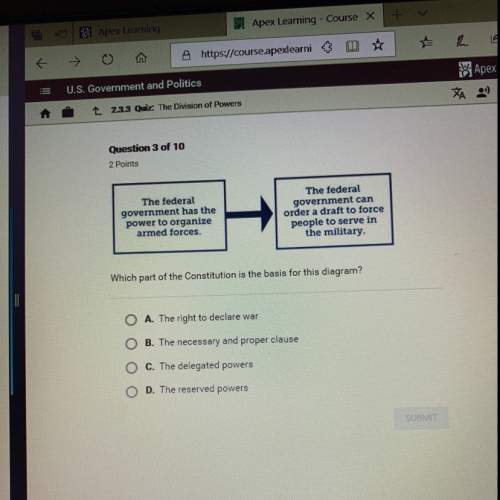
History, 07.07.2020 23:01 leomcintyre12
President Reagan’s trickle-down economic policies led to an era of lowering taxes and revenue while continuing to increase spending. This policy resulted in an explosive growth in the national debt which continues to this day. Consider the following chart: When thinking about the national debt, it’s important to measure the debt as a percentage of gross domestic product. Gross domestic product (or GDP) is a measurement of the value of all goods and services produced in a nation in a year. It’s helpful to look at the percentage of national debt to GDP for a few reasons: Comparing percentages takes inflation out of the consideration, allowing for more fair comparisons over long periods of time. Using percentage debt to GDP gives the reader a sense of the scale of debt and what the amount of debt means for attempts to pay it off. What might be the costs of having such a large national debt? Did the promise that tax cuts would result in a growing economy that would pay for any budget shortfalls come true during the Reagan years?

Answers: 1


Another question on History

History, 22.06.2019 02:30
Many young people traveled by train out of the midwest in search of new opportunities during the 1930s. what term is used to describe their actions
Answers: 1

History, 22.06.2019 10:30
Compare nicolson's written account with the visual representation in the painting on page 741 of your textbook. what are some of the similarities? what are some of the differences?
Answers: 2

History, 22.06.2019 16:10
Read the following passage from muir's "calypso borealis" and respond to the prompt. [2] the rarest and most beautiful of the flowering plants i discovered on this first grand excursion was calypso borealis (the hider of the north). i had been fording streams more and more difficult to cross and wading bogs and swamps that seemed more and more extensive and more difficult to force one's way through. entering one of these great tamarac and arbor-vitae swamps one morning, holding a general though very crooked course by compass, struggling through tangled drooping branches and over and under broad heaps of fallen trees, i began to fear that i would not be able to reach dry ground before dark, and therefore would have to pass the night in the swamp and began, faint and hungry, to plan a nest of branches on one of the largest trees or windfalls like a monkey's nest, or eagle's, or indian's in the flooded forests of the orinoco described by humboldt. [3] but when the sun was getting low and everything seemed most bewildering and discouraging, i found beautiful calypso on the mossy bank of a stream, growing not in the ground but on a bed of yellow mosses in which its small white bulb had found a soft nest and from which its one leaf and one flower sprung. the flower was white and made the impression of the utmost simple purity like a snowflower. no other bloom was near it, for the bog a short distance below the surface was still frozen, and the water was ice cold. it seemed the most spiritual of all the flower people i had ever met. i sat down beside it and fairly cried for joy. how do authors communicate their tone in a piece of writing? identify the tone (or tones) of this passage. explain how the tone(s) is created, providing at least two examples from the passage and explaining how each contributes specifically to the tone(s) you identified. your response should be a paragraph of 5–7 sentences.
Answers: 2

You know the right answer?
President Reagan’s trickle-down economic policies led to an era of lowering taxes and revenue while...
Questions

Computers and Technology, 24.02.2021 01:40

Mathematics, 24.02.2021 01:40

Mathematics, 24.02.2021 01:40

Mathematics, 24.02.2021 01:40

Chemistry, 24.02.2021 01:40

Computers and Technology, 24.02.2021 01:40

Mathematics, 24.02.2021 01:40


Arts, 24.02.2021 01:40


Mathematics, 24.02.2021 01:40

History, 24.02.2021 01:40

Chemistry, 24.02.2021 01:40

Mathematics, 24.02.2021 01:40




Health, 24.02.2021 01:40





